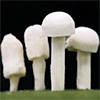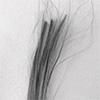Mar 03, 2025 (Nanowerk Spotlight) Synthetic plastics derive their exceptional properties from complex molecular structures—structures that make them both highly useful and environmentally problematic. Creating sustainable alternatives requires materials that offer similar performance without long-term persistence. Living organisms already produce materials with remarkable capabilities: they adapt to environmental conditions, repair...
Graphene production technique offers potential green alternative to graphite mining
Mar 03, 2025 Researchers have developed a reproducible and scalable method for producing graphene oxide nanosheets from commercial carbon fibers, marking a breakthrough in sustainable nanomaterial synthesis. (Nanowerk News) In the latest volume of the scientific journal Small ("Making Synthetic 2D Graphene Oxide Nanosheets by Electrochemical Oxidation of Commercial Carbon...
Nanotechnology Now – Press Release: Development of ‘transparent stretchable substrate’ without image distortion could revolutionize next-generation displays Overcoming: Poisson’s ratio enables fully transparent, distortion-free, non-deformable display substrates
Home > Press > Development of 'transparent stretchable substrate' without image distortion could revolutionize next-generation displays Overcoming: Poisson's ratio enables fully transparent, distortion-free, non-deformable display substrates (Top) Distortion problems in elastomeric materials during stretching and distortion-free stretching (Bottom) Typical elastomer with Poisson's ratio of 0.5 (severe vertical contraction, left),...
Nanotechnology Now – Press Release: Leading the charge to better batteries
Home > Press > Leading the charge to better batteries Professor Kelsey Hatzell and postdoctoral researcher Se Hwan Park stand in the Hatzell lab. (Photo by Bumper DeJesus) Credit Bumper DeJesus, Andlinger Center for Energy and the Environment Abstract:From laptops to electric vehicles, lithium-ion batteries power everyday life. However,...
High-throughput computing and in situ technologies boost atomic nanomaterials development
Feb 26, 2025 Researchers demonstrate the selective catalytic double metal single atom of heavy metal redox reaction via combined high-throughput calculation and in situ characterization technology. (Nanowerk News) Recently, a collaborative research team led by Professor HUANG Xingjiu from the Hefei Institutes of Physical Science of the Chinese Academy of...
Ions boost efficiency and longevity in quantum-dot displays
Feb 26, 2025 (Nanowerk Spotlight) The screen on your smartphone or television contains millions of tiny light-emitting elements that activate individually to create images. Current display technologies use either organic molecules (OLEDs) or semiconductor nanocrystals called quantum dots (QD-LEDs) to generate this light. While these technologies produce vibrant colors, they...
Nanotechnology Now – Press Release: New ocelot chip makes strides in quantum computing: Based on “cat qubits,” the technology provides a new way to reduce quantum errors
Home > Press > New ocelot chip makes strides in quantum computing: Based on "cat qubits," the technology provides a new way to reduce quantum errors The Ocelot quantum computer chip. Credit AWS Abstract:Scientists based at the AWS Center for Quantum Computing on Caltech's campus have made a...
New photon-avalanching nanoparticles could enable next-generation optical computers
Feb 26, 2025 Advance could pave the way for optical transistors and memory for optical computing. (Nanowerk News) A research team co-led by Lawrence Berkeley National Laboratory (Berkeley Lab), Columbia University, and Universidad Autónoma de Madrid has developed a new optical computing material from photon avalanching nanoparticles. The breakthrough –...
Nanotechnology Now – Press Release: Multiphoton polymerization: A promising technology for precision medicine
Home > Press > Multiphoton polymerization: A promising technology for precision medicine (a, b) Schematic of the fundamental theorem and MPP-based micro/nanomanufacturing system. (a-i) Single-photon and (a-ii) multiphoton absorption process. S0: the ground state; S1: the excited singlet state; T1 and Tn: the triplet states; IC: the internal conversion; MPI:...
Researchers create the world’s smallest shooting video game using nanotechnology (w/video)
Feb 26, 2025 Researchers created the smallest shooting game using nanoparticles, advancing interfaces that blend virtual objects with real nanomaterials at the nanoscale. (Nanowerk News) A research team led by Professor Takayuki Hoshino of Nagoya University’s Graduate School of Engineering in Japan has demonstrated the world’s smallest shooting game by...










